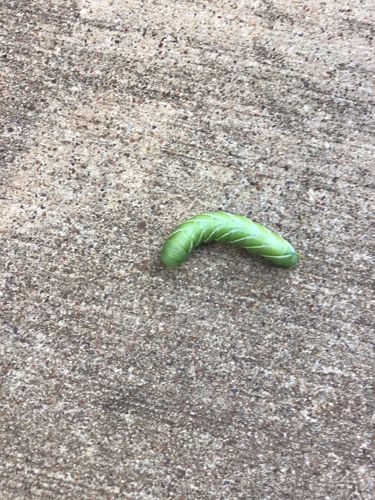Tobacco Hornworm (larva)
Scientific Name: Manduca sexta
Order & Family: Order: Lepidoptera, Family: Sphingidae
Size: Larvae (caterpillars) can grow quite large, typically reaching 7-10 cm (3-4 inches) in length in their final instar.

Natural Habitat
Tobacco hornworms are found in gardens, agricultural fields, and natural areas where their host plants (primarily Solanaceae family members) are abundant. They are particularly common in warm, temperate climates.
Diet & Feeding
The primary diet of the tobacco hornworm caterpillar consists of the leaves of plants in the Solanaceae family, including tobacco, tomato, potato, eggplant, and peppers. They can cause significant defoliation to these plants.
Behavior Patterns
Tobacco hornworms are typically found feeding on host plants, often camouflaging due to their green color. They are voracious eaters, especially in their final instar before pupation. They are solitary feeders. When disturbed, they may rear their head in a defensive posture. After feeding, they burrow underground to pupate into a sphinx moth.
Risks & Benefits
Risk: They are considered significant agricultural pests, especially in tomato and tobacco crops, due to their extensive feeding habits which can destroy plants. Benefits: The adult moths (Carolina Sphinx moths) are important pollinators, particularly for deep-throated flowers, and serve as a food source for birds and other predators.
Identified on: 8/16/2025